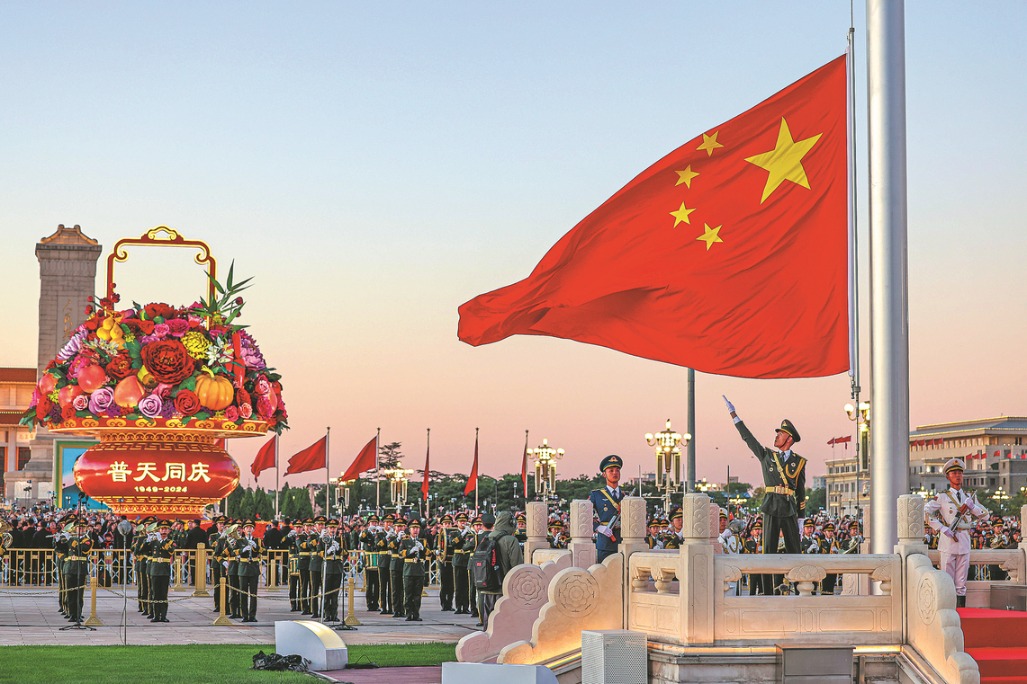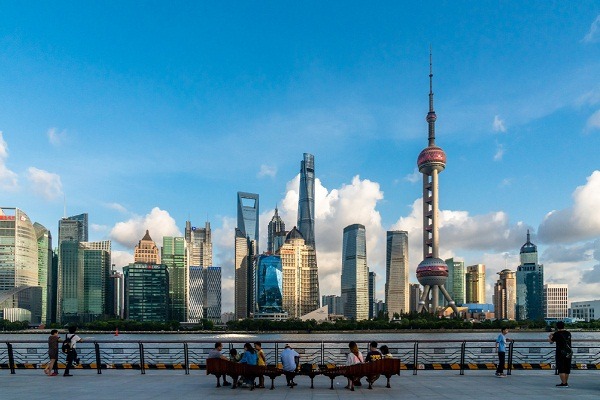Dual circulation strategy, a necessary adjustment


The US' strategy of 'building a small courtyard with a high fence' has not held back but rather fueled innovative inspiration in China
For a long time, China has implemented a "great international circulation strategy", which relied heavily on foreign markets for the provision of raw materials, intermediate goods and technology as well as the sale of processed products. Essentially, this was a variant of the export-oriented development strategy.
On July 30, 2020, the Political Bureau of the Central Committee of the Communist Party of China proposed to accelerate the establishment of the new dual-circulation development paradigm, in which domestic and international circulations coexist, with domestic circulation playing the primary role. After the launch of the reform and opening-up policy, the shortage of foreign exchange reserves was the biggest bottleneck to China's economic takeoff: China desired to import advanced foreign equipment, but in 1978, it had only $167 million in foreign exchange reserves; China aimed to participate in the global market and engage in foreign trade, but it lacked the foreign exchange to import raw materials, intermediate goods and technology.
Fortunately, China's reform and opening-up coincided with the boom of subcontracting and original equipment manufacturing in East Asia. This trade model enabled China to obtain the necessary raw materials, intermediate goods and technology without using much foreign exchange. By processing them and then exporting the processed products, Chinese companies could earn foreign exchange equivalent to the value added through processing. The processing trade led to a surge in China's trade surplus. As an important ingredient of the "great international circulation strategy", China provided various incentives to attract foreign direct investment, and as a result China started to run a large capital account surplus in the 1990s.
The "great international circulation strategy" successfully solved China's foreign exchange and capital shortages, thus it made a significant contribution to China's rapid economic growth.
In 1979, China ranked 11th by GDP behind the Netherlands, accounting for only 1.79 percent of the world economy. In 1978, China's exports totaled $9.75 billion, a negligible share of global exports.
In 2009, China became the world's largest exporter, and in 2013 the world's largest trading nation. In 2010, it overtook Japan to be the world's second-largest economy. By 2022, China's GDP had reached $18 trillion, which was 18 percent of the world's total and more than four times the GDP of Japan.
However, the very success of the "great international circulation strategy" meant it started to negate itself. First, the Chinese economy has become susceptible to external shocks. Second, the trade protectionism of developed countries, especially that of the United States, which is specifically aimed at China has surged. Third, the enterprises of developed countries are becoming less willing to transfer new technology to China. Fourth, China has accumulated a large amount of foreign exchange reserves, consisting mostly of US government bonds, whose asset value is threatened by the US' worsening fiscal deficit and external position.
The Chinese government recognized the limitations of the export-oriented strategy long ago and began to adjust its "great international circulation strategy" in 2006. In fact, the share of exports in GDP peaked at 35.21 percent in 2006 and has declined ever since.
It is mutually beneficial for both developing and developed countries when the former, with an abundant labor force, promotes the export of labor-intensive products and manufactured goods to the latter. However, the elite class in developed countries often fails to fairly distribute the benefits they gain from international trade. With no effective industrial upgrades, the livelihood of blue-collar workers in these countries is impacted, leading to a rise in protectionist and xenophobic public sentiment.
The rapid deterioration of the Sino-US relationship and the US' sudden instigation of a trade war against China in 2017 have significantly added to the urgency for China to adjust its development strategy and trade policies.
The declaration and implementation of the dual-circulation strategy by the Chinese government is a response to the changes in geopolitics as well as the external economic environment. But make no mistake, while China is prioritizing domestic demand to drive economic growth, it will continue to promote trade liberalization, uphold the principles of multilateralism, strive to maintain the authority of multilateral international organizations such as the World Trade Organization, and participate in negotiations for the establishment of free trade areas.
Through trade, investment and technological exchanges, the economies of China and the US are deeply interdependent. However, the narrowing economic gap between the two has evoked a strong fear of China among the US political elite.
The Donald Trump administration regarded China as the US' top adversary, and initiated the US' ongoing trade war with China, dramatically raising tariffs, placing many Chinese high-tech companies on its entity list, and imposing sanctions on high-tech companies including ZTE and Huawei.
The Biden administration has somewhat moderated the US' economic policy toward China, but continues to exclude China from global high-tech industry chains on the pretext of national security.
China thus has to deal with the daunting challenge of how to actively participate in the international division of labor while at the same time establishing and maintaining a relatively comprehensive domestic industrial system. It is a problem which economists have been debating for the past 230 years, ever since Alexander Hamilton, the first US secretary of the Treasury, published his famous Report on the Subject of Manufactures in 1791.
For all nations, especially major ones, participating in the international division of labor based on comparative advantages (including dynamic comparative advantages) is not unconditional. It has to be coordinated with building a comprehensive industrial system.
The comprehensiveness of the domestic industrial system is important because industries within a country are interdependent. But all industries are not equally important. Although the absence of one industry (or industry group, category, subcategory) can affect others, the roles that different industries play in a country's survival and development are varied.
A sufficiently comprehensive industrial system presents security in two ways, first, if the industrial system is comprehensive enough, even when more advanced trade partners "kick away the ladder", the country is still capable of achieving its development goals. Some counter examples show that without industries such as the steel industry, machinery manufacturing and certain high-tech industries, major nations may lose the opportunity to enter the club of advanced countries. Second, the comprehensiveness of an industrial system is a guarantee of national security in terms of food, energy and defense. Regardless of profitability, industries such as these are essential for growth and national security, and hence must be developed.
In building and perfecting its industrial system, China needs to strike a balance between efficiency and security. While comprehensiveness is essential for security, efficiency requires getting as involved as possible in the international division of labor and integrating into global supply chains. The key to balancing efficiency and security is adaptability.
Having adaptability means that despite a country having an industrial system that is not fully comprehensive, it retains strong capabilities to quickly make up for any shortages when necessary, due to its participation in the international division of labor.
The adaptability of an industrial system largely depends on whether basic industries are fully developed. For instance, a strong general machine tool industry can rapidly address shortages in a specific segment of machine tools. Ultimately, adaptability comes from education, research and high-tech industries.
Although the US and its allies are making every effort to exclude China from global supply chains, China will not voluntarily withdraw, which we call "body-lock" tactic. On the contrary, China will work with other countries to maintain the integrity of global supply chains.
With the US striving to exclude China from certain global industry chains, China is left with no choice but to build its own industry chains. In other words, China has to prepare "spare wheels" in case of being cut off entirely from the supply chains dominated by the US. China has already established a strong industrial base and the largest army of engineers and skilled workers in the world. Hence, the US is unlikely to succeed in containing China's development. The best the US can get is a pyrrhic victory. In fact, the US' strategy of "building a small courtyard with a high fence "has not held back but rather fueled endogenous innovation in China.
The author is an academic member of the Chinese Academy of Social Sciences. The author contributed this article to China Watch, a think tank powered by China Daily.
The views do not necessarily reflect those of China Daily.
Contact the editor at editor@chinawatch.cn.
































